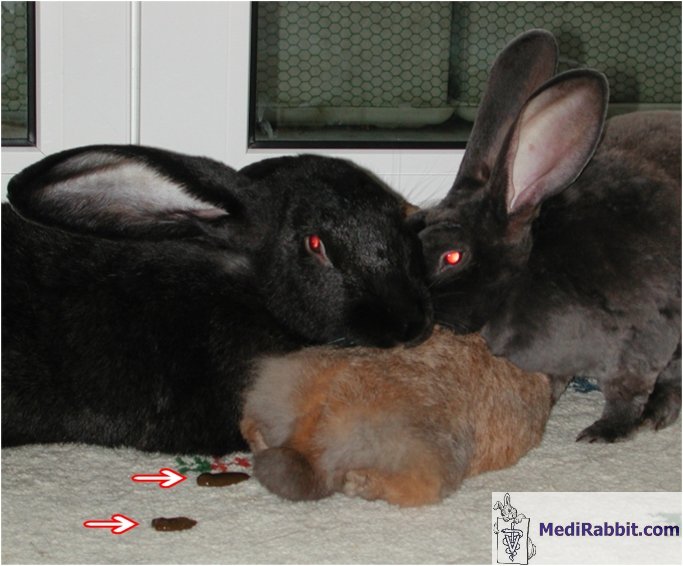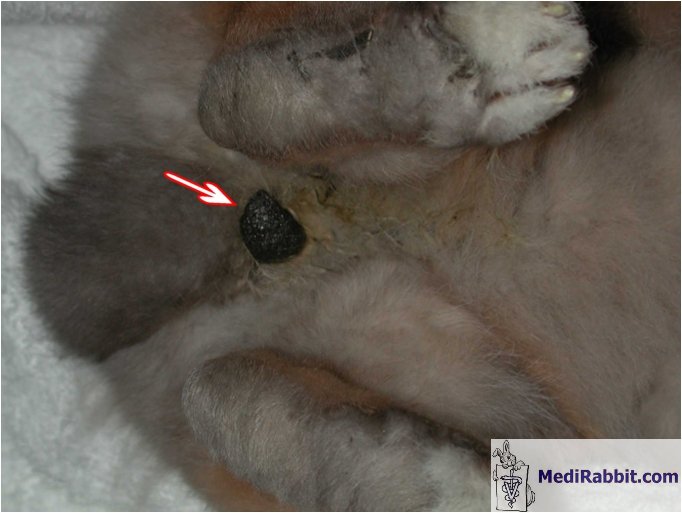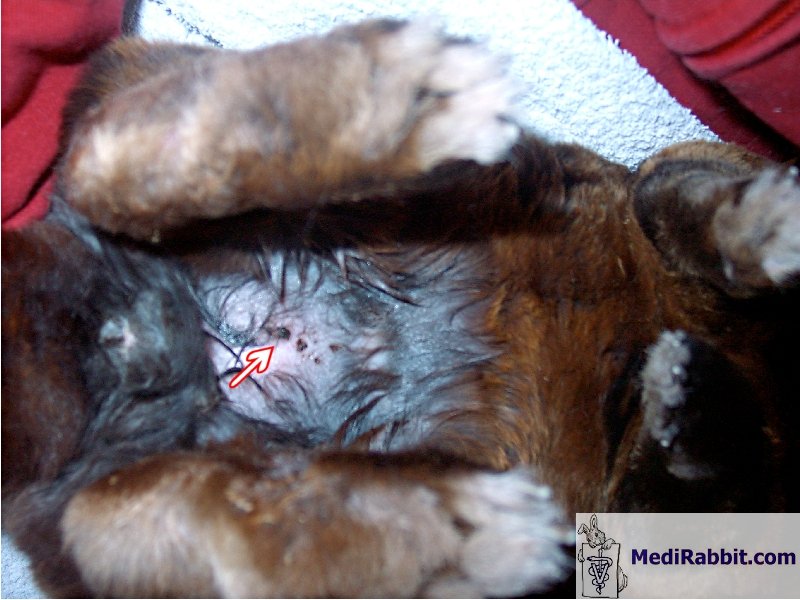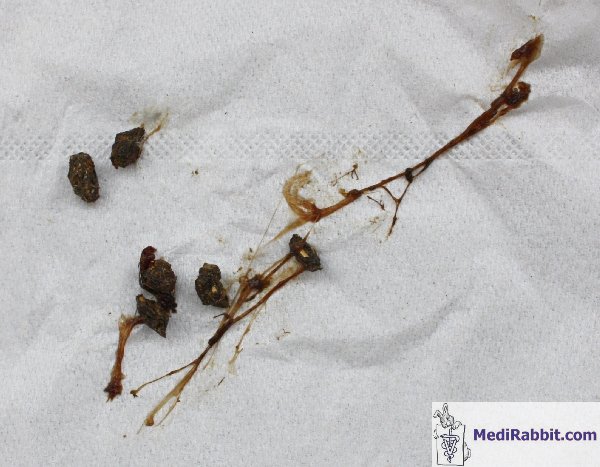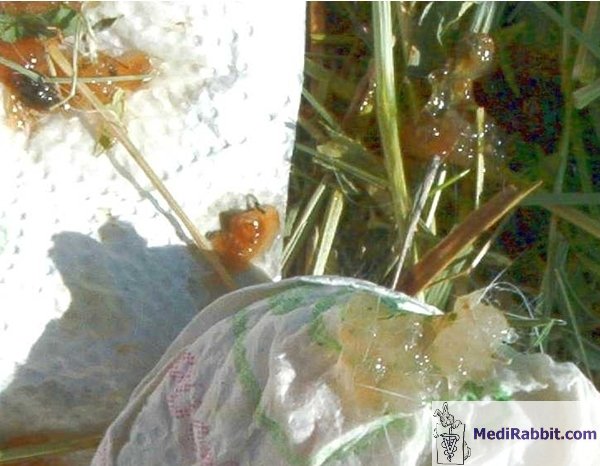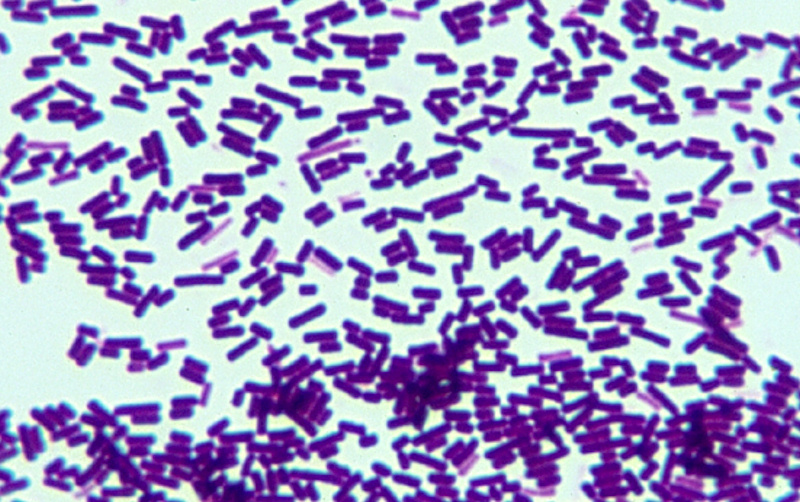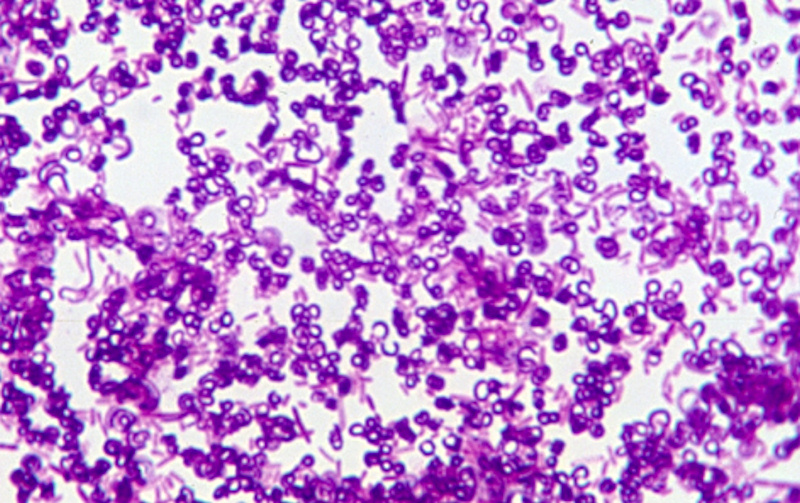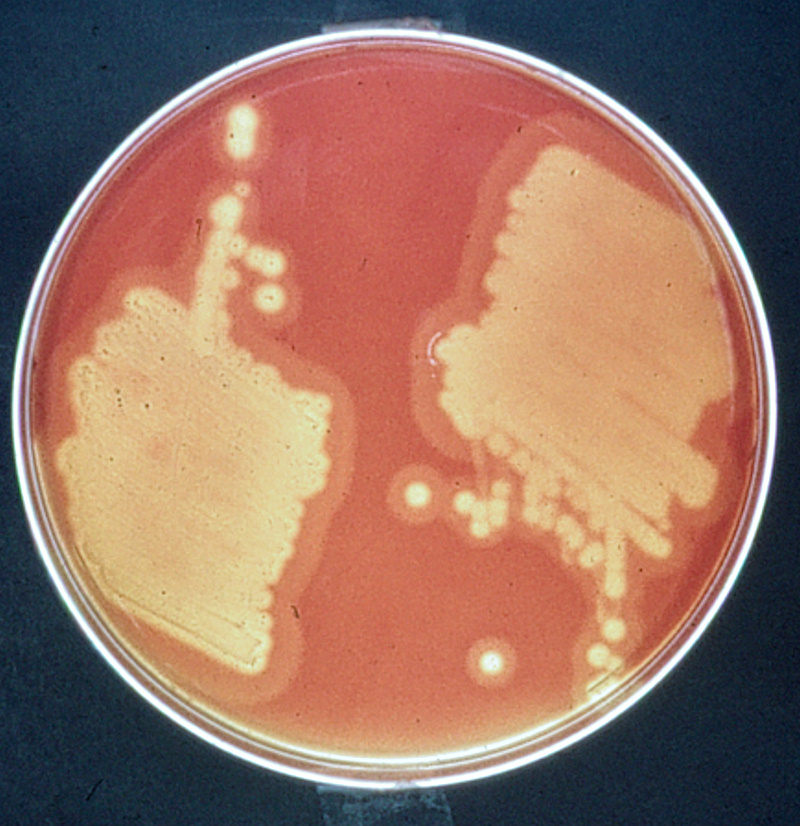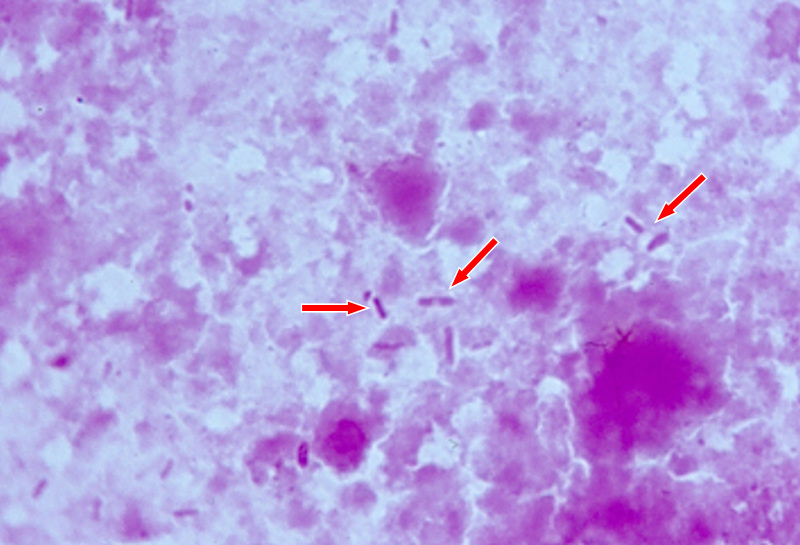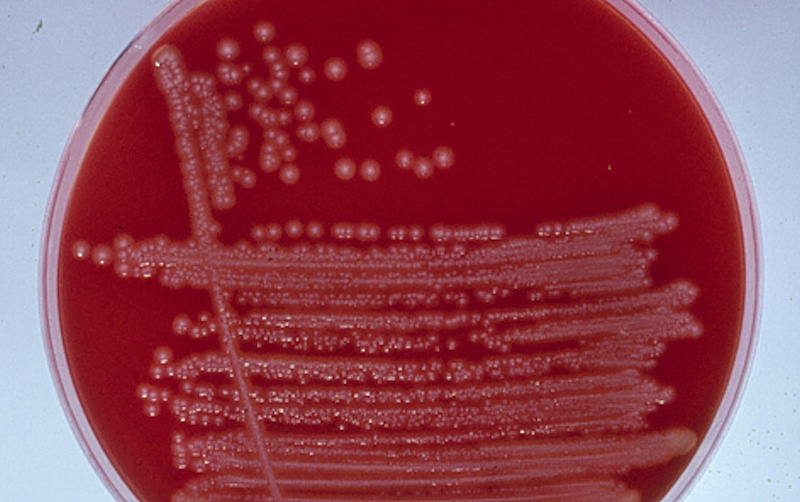Bacterial enteritis and diarrhea in
weaned and adult rabbits
Esther van Praag, Ph.D.
|
MediRabbit.com is
funded solely by the generosity of donors. Every donation,
no matter what the size, is appreciated and will aid in the continuing
research of medical care and health of rabbits. Thank you |
Warning: this file contains pictures
that may be distressing to some persons
|
In rabbits, the health of the digestive system is
considered a vital indicator of the animal's overall well-being. While a
specific and unique cause of digestive transit disruption has not been
identified, a combination of factors has been determined to contribute to the
condition. These factors include stress, the transition from a milk diet to
an herbivorous diet during weaning in rabbits, hygiene, parasites, molting,
trichobezoars (masses of fur and hair in the stomach), and dental problems.
In response, rabbits exhibit signs of intestinal disturbances, which are
typically characterized by the onset of diarrhea. Newborns are not
significantly affected because they are protected by milk produced by the
doe, which has antibacterial properties that prevent the growth of pathogenic
bacteria. Newly weaned 4- to 7-week-olds primarily experience enterotoxemia,
which results in significant intestinal flora destruction. After this age,
young rabbits and adults are susceptible to mucoid enteritis, which can result
in partial destruction of the bacterial flora. Diarrhea Intestinal diarrhea in rabbits is favored by the
following facts: 1.
The rabbit is a very nervous animal which is unable
to effectively adjust its alarm response (adrenaline discharge) in accordance
with the gravity of the situation. 2.
The rabbit has a unique intestinal physiology,
marked by coprophagy (cecotrophy—the reingestion of feces produced in the
cecum). During periods of stress, the hormone adrenalin is released in the
blood, affecting the nervous system and slowing down intestinal activity. The
passage of food is reduced, and coprophagia is halted. 3.
Following a stressful event, the cecum exhibits
increased alkalinity. This will have a significant impact on the intestinal
environment and bacterial flora, creating an environment favorable for the
proliferation of potentially harmful bacteria, such as Escherichia coli
and various species of Clostridium. 4. The
manifestation of a disease in rabbits is often delayed after a period of
stress, with diarrhea typically appearing within one to seven days..
The clinical signs of digestive problems or
enteritis in rabbits are generally consistent. The initial symptoms, which
persist for 1 to 3 days, often go unnoticed: a decrease in food intake and
constipation. The watery cecal feces are generally not consumed. After the
fifth day, there is an onset of moderate diarrhea, accompanied by skin
dehydration. Diarrhea is characterized by the presence of small quantities of
liquid feces, which soil the anal region and hindquarters of the rabbit.
Death can occur during this phase, and in some cases, this can happen even
before the diarrhea appears. Two to three days later, the acute form of the
illness develops. The rabbit exhibits a cessation of appetite and drinking,
accompanied by significant diarrhea. Severe intestinal pain and discomfort
can be accompanied by teeth grinding. The rabbit may suffer an agitated
comatose state. At this stage, the prognosis is poor, and the mortality rate
is high. Animals that remain comatose for an extended period may have a
positive outcome if they are provided with the appropriate care. In most
cases, a recovery period of several days is observed. A post-mortem examination of the intestine reveals
atypical lesions. During the acute phase of the disease, the intestinal wall
appears bruised or congested. The content is lacking in substance. The cecum
appears congested, exhibiting red brushstrokes, and is filled with gas and
minimal food.
Causes
There are specific and non-specific causes for
diarrhea. Young rabbits exhibit adverse reactions to stress,
particularly during the post-weaning phase, transportation, unfamiliar
sounds, and new environments and social interactions with other animals.
Modifications to the diet or a diet low in fiber may result in digestive
disorders. It is important to note that food alone is not typically the
primary cause of diarrhea. Rather, the composition of the food plays a
crucial role: a low percentage of crude fiber, an excess of carbohydrates or
proteins, the use of overly fine grinding in food preparation, improper
watering techniques, or the introduction of a new variety of vegetable or
fruit. Viruses and
bacterial overgrowth of pathogens such as Corynebacteria sp., Clostridium
sp., Pasteurella sp., and Escherichia coli can cause enteritis. However, the
occurrence of Salmonella sp. is rare in rabbits. The presence of intestinal
parasites, such as trematodes (flukes), cestodes (tapeworms), nematodes
(parasitic intestinal worms), and protozoa (coccidiosis), can also lead to
digestive disorders in rabbits, with symptoms including stasis and diarrhea. Further
causes of diarrhea include the administration of drugs or antibiotics (see: “Antibiotics
dangerous for use in rabbits”), or the presence of nitrate in the
drinking water. Bacterial and Mucoid enteritis
Mucoid diarrhea has been observed in growing rabbits and nursing
does. The watery feces are mixed with mucus, a translucent and gelatinous
substance. This particular type of enteritis has various etiologies,
including bacterial overgrowth or nutritional deficiencies (lack of water and
food low in fiber).
Bacterial enteritis develops rapidly, within 3 to 4 days, and often
leads to death before the onset of diarrhea. Intestinal enteritis is a
condition caused by bacteria such as Clostridium perfringens and Escherichia
coli. In healthy rabbits, the number of Escherichia coli bacteria present in
the fecal droppings is low (102–103/g droplets). However, in cases of
diarrhea, these bacteria are present in high numbers. The bacterium produces
toxins, but it has been demonstrated that these alone do not result in the
onset of diarrhea. A supplemental source of stress is required to induce
diarrhea. This stressor could be a non-balanced diet or a thermal shock (a
sudden change in weather, drop in temperature, or atmospheric pressure).
Clostridium perfringens exists in five forms and is classified according to the production of
toxins. These toxins induce local lesions in the intestine, but their action
may also affect distant organs such as the liver and the kidney. Escherichia coli possesses five general mechanisms to invade the intestine and cause
the disease. In certain cases, the bacterium may produce toxins. It invades
the intestine by adhering to the villi of enterocytes and begins to
proliferate. The presence of toxins stimulates the secretion of water and
electrolytes by the intestinal mucosa. The combined presence of bacteria and
toxin production can result in diarrhea. The presence of both bacteria is often associated with the presence
of coccidia.
Treatment
Given the rapid
progression of the disease, treatment of bacterial enteritis frequently comes
after the onset of symptoms due to the rapid evolution of the disease and the
severe dehydration of the rabbit. Antibiotics, including sulfonamide drugs,
may help prevent the growth of bacteria that cause disease. Certain products
designed to treat diarrhea can effectively alleviate symptoms. One such
example is Hylak, a concentrated blend of lactic
ferments. Cholestyramine is an effective solution for binding toxins released
by pathogen bacteria, such as the alpha toxins produced by Clostridium
perfringens. While the efficacy of probiotic powders and pastes is a subject of
debate, they have been shown to support the growth of healthy bacterial flora
in the gut. In the event of dehydration, the rabbit should be given oral fluids using a syringe or subcutaneous fluids. If the rabbit refuses to eat, it is necessary to use a syringe to provide food. A variety of veterinary products are available to treat sick rabbits. Homemade food can also be prepared using the usual pelleted food, which should be finely ground in a coffee grinder. A few drops of olive oil and plant-based baby food (pumpkin, carrot, apple, etc.) diluted in lukewarm water should be added to obtain a smooth paste that can be easily taken up in a syringe. Despite its controversial
nature, virgin cold-pressed olive oil possesses several properties that can
assist in alleviating constipation or diarrhea. Its presence in the intestine
stimulates the secretion of digestive fluids, such as bile, stimulates peristaltic
movement of the intestine and facilitates intestinal wall lubrication. In
addition, it has been shown to promote the growth of healthy intestinal
bacteria. In the event of yeast
overgrowth, it is advisable to reduce the consumption of foods rich in
carbohydrates. The absence of sugars will result in a natural decline of the
yeast population in the intestine. If this is not effective, an antifungal
drug like nystatin can be administered to the rabbit. Plants with medicinal or other properties have
been shown to be effective in treating diarrhea and facilitating recovery in
rabbits affected by the disease. The following tables present the relevant
information.
Acknowledgements
I
would like to express my sincere gratitude to Professor Richard Hoop (Institut für Veterinärbakteriologie,
University of Zurich, Switzerland), to Kim Chilson (USA), and to Tal Saarony
for kindly granting me permission to use their pictures. I would also like to
express my gratitude to my rabbits, Adar, Flora, and Stampi,
for illustrating this article. Further
Information Bryskier A, Doll J,
Labro MT, Andrieu J. Role of Clostridium and its toxin in
pseudo-membranous colitis. Ann Biol Clin (Paris). 1981;39(1):1-8. Jones JR, Duff JP. Rabbit epizootic enterocolitis. Vet Rec. 2001 Oct
27;149(17):532. Hoop RK, Ehrsam H, Keller B. 10 years of rabbit autopsy--a review of
frequent disease and mortality causes. Schweiz Arch Tierheilkd. 1993;
135(6-7):212-6. Humphrey CD, Condon CW, Cantey JR, Pittman FE. Partial purification of
a toxin found in hamsters with antibiotic-associated colitis. Reversible
binding of the toxin by cholestyramine. Gastroenterology. 1979
Mar;76(3):468-76. Licois D. Tyzzer's disease. Ann Rech Vet. 1986; 17(4):363-86. Sinkovics G. Rabbit dysentery: 3. Diagnostic differentiation. Vet Rec.
1978 Oct 7; 103(15):331-2. Patton NM, Holmes HT, Riggs RJ, Cheeke PR. Enterotoxemia in rabbits. Lab Anim Sci. 1978;
28(5):536-40. Patton NM, Holmes HT, Riggs RJ, Cheeke PR. Enterotoxemia in rabbits. Lab Anim Sci. 1978;
28(5):536-40. Tribe GW,
Whitbread TJ, Watson GL. Fatal enteritis in rabbits associated with a
spirochaete. Vet Rec. 1989; 124(22):595. |
|||||||||||||||||||||||||||||||||||||||||||||||||||||||||||||||||||||||||||||||||||||||||||||||||||||||||||||||||||||||||||||||||||||||||||



